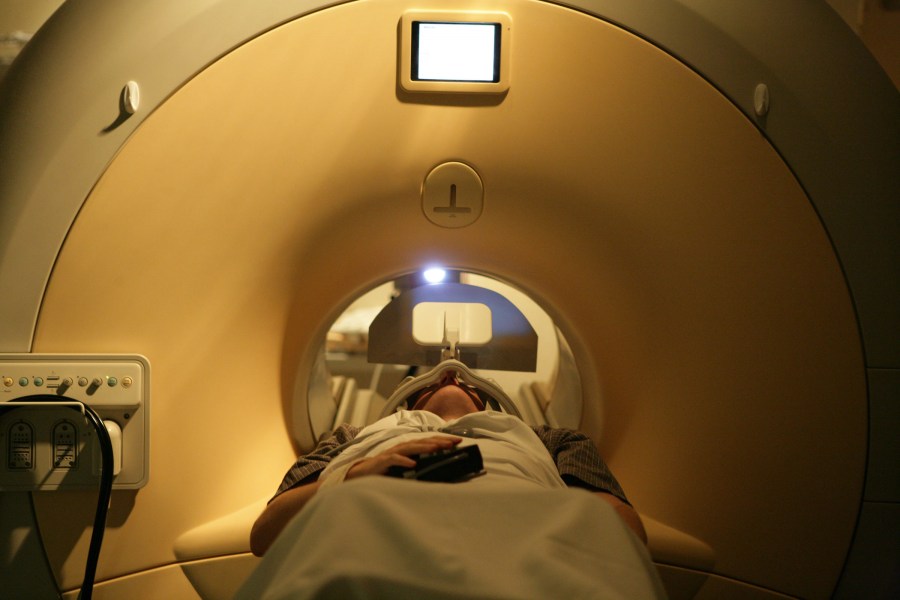
Vanderbilt Heart and Vascular Institute is now offering a new type of pacemaker that is compatible with Magnetic Resonance Imaging (MRI). (photo by Daniel Dubois)
VHVI debuts pacemaker that’s compatible with MRI
Historically, patients with pacemakers — internal devices that help regulate heart rhythm — have been advised to avoid Magnetic Resonance Imaging (MRI) because they might face serious complications, such as interference with pacemaker operation or damage to system components.
Vanderbilt Heart & Vascular Institute is now able to offer a new pacemaker that is compatible with MRIs, also known as MRI-conditional.
The Revo MRI SureScan pacing system is the first one designed, tested and FDA-approved for use in Magnetic Resonance Imaging (MRI) units.
Walter Clair, M.D., medical director of Cardiac Electrophysiology, implanted Vanderbilt's first SureScan pacemaker in 59-year-old Mary Gulley of Shelbyville, Tenn., on Feb. 16.

Walter Clair, M.D.
Gulley has chronic low back pain, and occasionally needs an MRI to monitor it.
“When we initially spoke with Miss Gulley about getting a pacemaker for her abnormal heart rhythm, we talked about the limitations, and I had to tell her she could no longer have MRIs,” Clair said.
“She was concerned about that. When we realized we were going to be able to put in one of these new pacemakers, and I asked her if she'd like to be that first patient for us, and she was very pleased.”
MRI scanners may cause traditional pacemakers to misinterpret MRI-generated electrical noise and withhold pacing therapy or deliver unnecessary pacing therapy. The Revo MRI pacing system can be programmed into SureScan mode prior to an MRI scan, with the ease of an external remote control, making it relatively safe for use in the MRI. Afterward, it can be programmed to resume normal status.
The number of patients with pacemakers is growing at the same time that the use of MRI is increasing. About 40 million MRI scans are performed annually in the United States, and Vanderbilt performs nearly 29,700 MRI procedures each year.
It has been estimated that there is a 50 percent to 75 percent probability that cardiac device patients will be indicated for an MRI over the lifetime of their devices, and more than 200,000 patients annually in the United States may have to forego an MRI scan because they have a pacemaker.
“We have parallel technologies. One is therapeutic — the pacemaker — and the other diagnostic — the MRI. At Vanderbilt Heart, we use MRI more than we did five or 10 years ago to help us with the diagnosis and management of our patients who have heart problems,” Clair said.
“Now they don't have to rob Peter to pay Paul. They don't have to compromise the diagnostic benefit of MRI in place of a pacemaker. It frees some of our patients from the anxiety of having to choose.”
Clair said he encourages Vanderbilt Heart patients to talk to their cardiologists about which pacing system is right for them.













